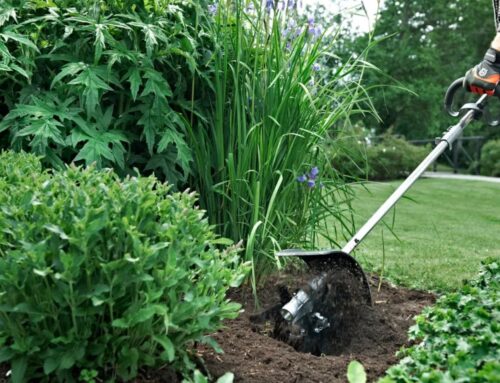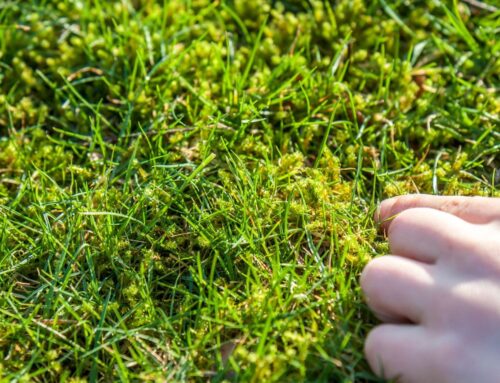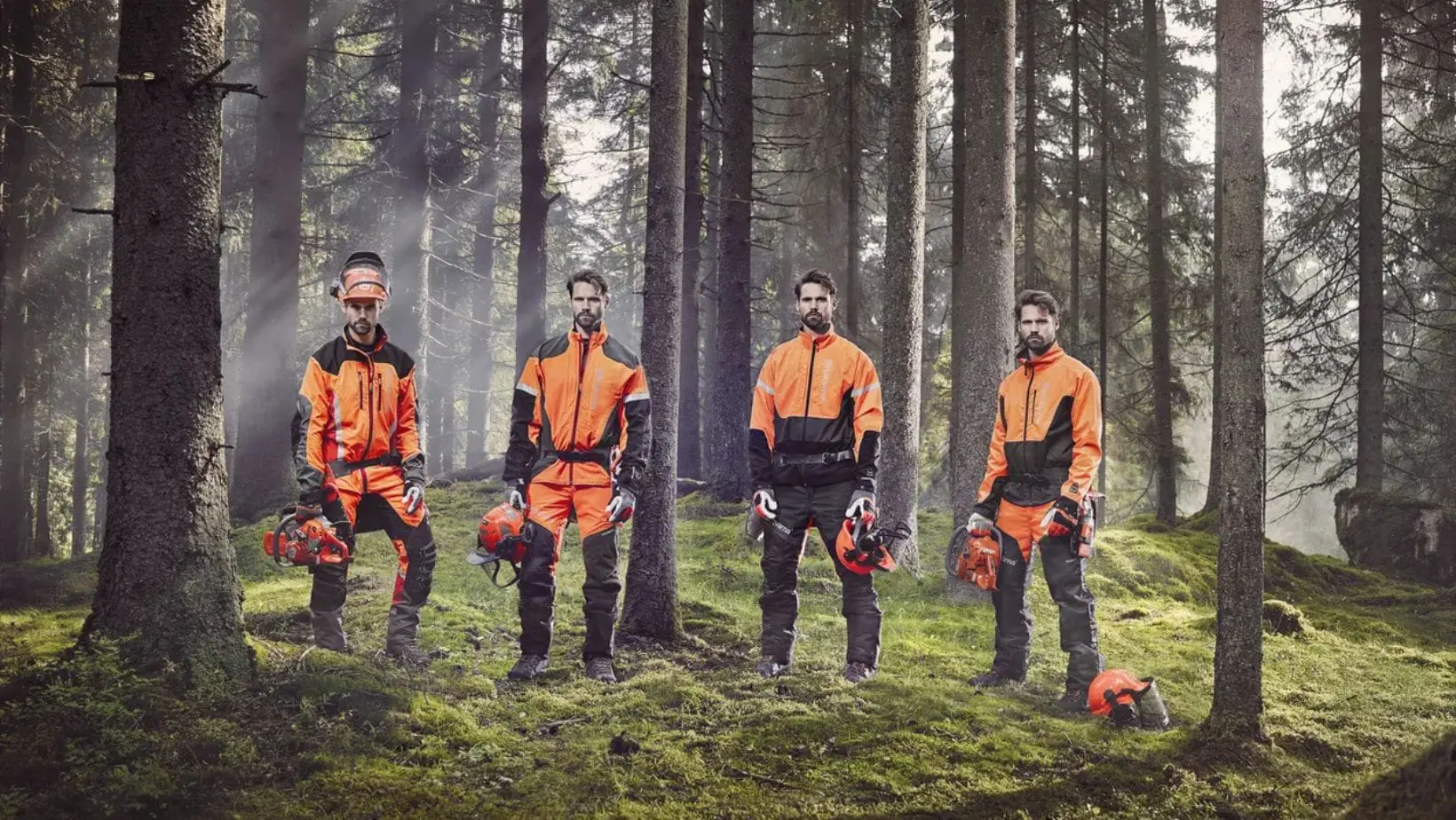
How to Select the Right Garden PPE for Different Types of Work
Spending time in the garden is a relaxing, uplifting experience, but when you’re operating garden machinery, with its sharp blades rotating at high speeds, you need to exercise some caution if you’re going to remain safe. And one of the best ways you can do this is by wearing the correct garden PPE (personal protective equipment) for the task in hand.
In this guide, we’ll examine the main forms of PPE used when operating garden machinery. We’ll then advise you on the kind of garden PPE you should choose when carrying out popular garden maintenance jobs. Finally, we’ll round things off by taking a look at some of the other measures you can take to ensure you always remain safe while you’re hard at work in the garden.
Before Choosing Your Garden PPE
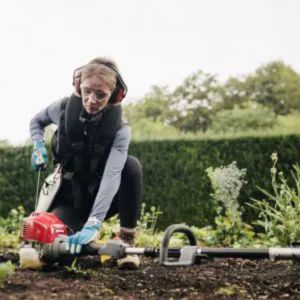 Before selecting the appropriate PPE for the garden machinery you’re operating, you need to pay attention to your regular clothing.
Before selecting the appropriate PPE for the garden machinery you’re operating, you need to pay attention to your regular clothing.
Firstly, it’s a good idea to wear a long sleeved top and trousers. Doing so will provide you with a small degree of protection from dust, debris, and any potential irritants emitted by the machine or whatever it’s cutting.
Secondly, ensure your clothes are properly fitted without them constricting your movement. Striking this balance should prevent loose bits of material getting caught in the machinery, while keeping you working comfortably.
Finally, remove scarves, necklaces, and the like. And if you have long hair, tie it up. If you won’t be wearing a helmet, choose some other form of hat, so you can keep your hair tucked up and out of the way. By doing these simple things, you’re again making sure that nothing on your person gets caught in the garden machine.
Popular Types of Garden PPE
The PPE category of our website is divided into the following sub categories: boots, chainsaw gloves, ear and face protection, general protective gloves, helmets, jackets and tops, trousers and braces, so you can easily find the correct garden protective wear for whatever job you need to do.
Let’s take a look at all of these items of protective clothing for gardening right now…
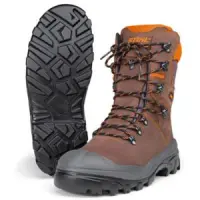
Boots Sold as Garden PPE
Boots provide an invaluable form of garden PPE. Their primary purposes are to protect your feet from sharp objects and heavy equipment.
Therefore, any pair of boots sold as gardening protective gear should be sturdier than regular footwear. They should also have some form of reinforced toe cap, steel being the most common. Other useful features to look out for include weathertightness, breathable liners, and slip-resistant soles.
You can view all of our protective boots here.
Gloves (Including Chainsaw Gloves)
 Gloves are undoubtedly the most common form of garden PPE, being primarily designed to protect your hands from cuts and scrapes. This makes them useful protective clothes when handling plants with prickly stems, like roses.
Gloves are undoubtedly the most common form of garden PPE, being primarily designed to protect your hands from cuts and scrapes. This makes them useful protective clothes when handling plants with prickly stems, like roses.
Gardening gloves help prevent blisters and give you a better grip on garden machinery too, as well as keeping your hands warm in winter.
Gloves specifically designed for use with a chainsaw have superior grip and more padding than other types of protective gloves. They should also help dampen the vibration of the machine’s engine before it reaches your hands. As you might expect, because of their more advanced design, chainsaw gloves tend to be more expensive than regular styles of gardening gloves.
Find our range of protective gardening gloves here.
And shop our specialist chainsaw gloves here.
Ear Protection
 Most petrol (and some electric) garden machines generate a lot of noise, which, over time, can damage your hearing. So, if you use this type of garden machinery for prolonged periods, you should wear ear defenders.
Most petrol (and some electric) garden machines generate a lot of noise, which, over time, can damage your hearing. So, if you use this type of garden machinery for prolonged periods, you should wear ear defenders.
As different types of garden machinery produce varying degrees of noise, the level of protection you require varies between machines. You can find out an individual machine’s noise level, which is measured in weighted decibels (abbreviated to dB or dB(A)), either in its operating manual or on our website. If this figure is above 85, then you need ear protection.
The level of protection offered by a pair of ear defenders is shown by their single number rating (SNR). By subtracting the SNR from the garden machine’s dB(A), you can then find out the level of noise your ears will be subjected to. Your aim should be to reduce this noise level to between 70 and 85 dB(A), as anything lower can cause difficulties with communication and hearing.
More information about this is available on the UK’s Health and Safety Executive (HSE) website.
Garden PPE for the Face (Including Eyes)
 Face shields, safety glasses and goggles are all designed to protect you from dust particles and high-flying debris. Through necessity, they are always transparent.
Face shields, safety glasses and goggles are all designed to protect you from dust particles and high-flying debris. Through necessity, they are always transparent.
By covering the entire face, face shields offer good all-round protection for the eyes, nose and mouth. Smaller face shields, known as visors, offer slightly less protection and are invariably attached to protective head gear.
However, you should never use a face shield as a substitute for glasses or goggles, which are specifically designed to protect the eyes. So, if your garden machinery manual recommends the use of specialist eye protection, be sure to follow its advice.
In terms of the difference between glasses and goggles, the former are more comfortable to wear, while the latter provide a much better seal. Therefore, your choice should be determined by the intensity of your work, and so the amount of particles and debris being generated.
Shop our full range of face, ear and eye protection here.
Helmets
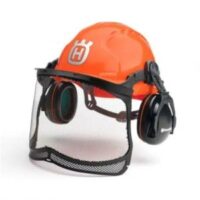 Hard hats are mandatory items of PPE on building sites. They can also be real life savers when carrying out certain types of work in the garden.
Hard hats are mandatory items of PPE on building sites. They can also be real life savers when carrying out certain types of work in the garden.
All kinds of helmet should be fully adjustable to ensure they remain comfortable and effective throughout your time at work. Some are designed with integral visors and/ or ear defenders too, providing you with an even more comprehensive piece of garden protective wear.
There are two types of garden machinery work where you should always wear a helmet. The first is if you’re working at height. The second is if you’re working in an area where there’s a risk of falling objects, for example underneath a tree.
There are models of protective hard hats available for both domestic and professional use.
Browse our full range of helmets now.
Protective Clothing for Gardening
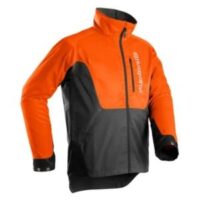 Don’t underestimate the importance of clothing tailored as gardening protective gear. Because it is specifically designed to wear when you’re operating garden machinery, it will make your time at work both safer and more comfortable.
Don’t underestimate the importance of clothing tailored as gardening protective gear. Because it is specifically designed to wear when you’re operating garden machinery, it will make your time at work both safer and more comfortable.
Garden PPE clothing is made from highly durable manmade materials, with additional safety features like padding and reinforced knees/ elbows. This means it provides you with excellent protection from cuts and lacerations, which are the most common form of injury when using garden machinery.
Protective clothing for gardening also possesses other qualities, designed to make your demanding garden machinery work more comfortable. These include being weatherproof, breathable and having moisture-wicking properties.
There are further practical benefits to this kind of clothing too, such as its enhanced visibility and large number of storage pockets.
You can view our full range of garden PPE jackets and tops here, while the protective trousers and braces are here.
Garden PPE for Popular Types of Machinery
As previously mentioned, the type of garden PPE you need varies according to the machine you’re operating. Your most important point of reference should always be the garden machine’s operating manual. However, in terms of general guidance for operating the most popular garden machinery, we recommend the following:
| Chainsaw PPE | Hedge Trimmer PPE | Strimmer PPE | Lawnmower PPE | |
|---|---|---|---|---|
| Helmet |
✓ (especially where there’s a risk of falling objects)
|
X | X | X |
| Ear Defenders |
✓ (petrol and electric models only) |
✓ (petrol and electric models only) |
✓ (petrol and electric models only) |
✓ (powerful petrol and electric models only) |
| Face/ Eye Protection |
✓ (both) |
✓ (glasses) |
✓ (glasses) |
X |
| Gloves |
✓ (specialist chainsaw gloves) |
✓ | ✓ |
✓ (but only when handling the blade) |
| Protective Clothing | ✓ | X | X | X |
| Boots | ✓ | ✓ | ✓ |
X (general closed-toe footwear is fine) |
For more information on chainsaw PPE, please read Chainsaw PPE: Essential Protective Gear And Clothing For Safer Chainsaw Operation.
Further Garden Machinery Safety Measures
Along with wearing the appropriate garden PPE, there are a number of other things you can do to make using garden machinery as safe and enjoyable as possible…
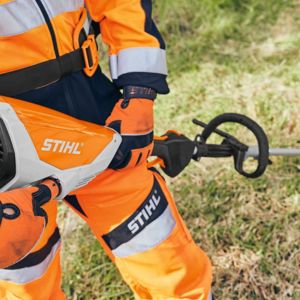 Know Your Garden Machinery
Know Your Garden Machinery
When you purchase a new garden tool or machine, it’s vitally important to familiarise yourself with it. This means reading the user manual, getting to understand the controls, and recognising the safety features. Knowing your garden machinery is the first step to avoiding accidents.
Control Your Workspace
Before operating garden machinery, you should always inspect your work area for potential obstacles, removing any hazards. Pets and children should be kept away from your workspace at all times.
Posture
Be sure to adopt a natural, stable posture, with a firm footing, while you work. Always remain in full control of the machine, never straining your body to operate it.
Also, know your limits. Certain tasks, like using a chainsaw at height, are best left to the professionals.
Remain Alert
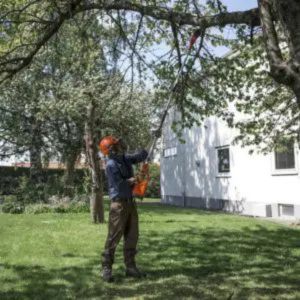 When you’re working, remain alert and aware of your surroundings.
When you’re working, remain alert and aware of your surroundings.
Do not operate garden machinery if you are tired, have been drinking alcohol, or are taking medication that might impair your reactions.
After Operating Garden Machinery
If you take a short break from operating garden machinery, turn it off and apply any safety catches or switches. Do not leave sharp objects unattended, even for short amounts of time.
Then, when you’ve finished using the machinery, completely disable it. Unplug electrical machinery and remove the batteries from cordless models.
Maintaining Garden Machinery
Part of your garden machinery maintenance routine should involve monitoring the condition of key components, checking for damage, and ensuring the safety features are working. You should do these things whenever you come to operate the machine.
And remember, annual servicing isn’t just a nicety, it’s an absolute necessity.
Properly maintaining garden machinery doesn’t just optimise performance, it prevents the equipment malfunctioning and keeps you working safely.
 Get All of Your Garden PPE Here!
Get All of Your Garden PPE Here!
As the nation’s favourite online retailer of garden machinery, it’s only natural that we have a market-leading range of protective clothing for gardening too. From boots to helmets and gloves to ear defenders, we really do stock the lot – all brought to you by the world’s leading manufacturers of garden protective wear, at prices you can afford.
And if you have any questions about the gardening protective gear that we sell, please don’t hesitate to contact our friendly, UK-based Garden Machinery Experts, who will be delighted to assist you in any way they can.

